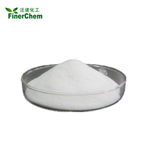Hydroxyethyl Cellulose: Enhancing Dental Care and Food Packaging Innovations
Oct 25,2024
Description
Hydroxyethyl cellulose is an organic chemical compound derived from cellulose. It is a non-ionic water-soluble, biocompatible and biodegradable polymer. It presents as a light tan or cream to white-coloured, odourless and tasteless hygroscopic powder. After reviewing data on clinical use in humans and data on animal experiments, including a study on intravenous injections given to dogs, HEC is considered to be non-toxic.

Applications in Dental Health Products
Hydroxyethyl cellulose (HEC), one of the widely used cellulose derivatives, has been tested in oral films in some studies. In a study performed to improve the conventional treatment of oral diseases, oral film made of HEC showed the highest mucoadhesion compared to other Cetylpyridinium chloride mucoadhesive oral films (Abouhussein et al., 2020). Another study incorporated Acyclovir loaded nanospheres into films prepared of hydroxyethyl cellulose and Eudragit RL 100 and found enhancement in the oral bioavailability of acyclovir both ex vivo and in vivo (Al-Dhubiab, 2016; Nair et al., 2017). Fluconazole mucoadhesive buccal films were also prepared using hydroxyethyl cellulose (Yehia et al., 2009).1
Applications in Food Packaging
Cellulose-based functional composite films can be a good substitute for conventional plastic packaging to ensure food safety. In this study, the semi-transparent, mechanical strengthened, UV-shielding, antibacterial and biocompatible films were developed from hydroxyethyl cellulose Polyvinyl alcohol (PVA) and ε-polylysine (ε-PL) were respectively used as reinforcing agent and antibacterial agent, and chemical cross-linking among these three components were constructed using epichlorohydrin The maximum tensile strength and elongation at break were 95.9 ± 4.1 MPa and 148.8 ± 2.6%, respectively. TG-FTIR and XRD analyses indicated that chemical structure of the composite films could be well controlled by varying component proportion. From UV-Vis analysis, the optimum values of the percentage of blocking from UV-A and UV-B and ultraviolet protection factor values were 98.35%, 99.99% and 60.25, respectively. Additionally, the composite films exhibited good water vapor permeability, swelling behavior, antibacterial activity and biocompatibility. In terms of these properties, the shelf life of grapes could be extended to 6 days after packing with the composite film.2
1.Dalia Y. Zaki . “A novel dental re-mineralizing blend of hydroxyethyl-cellulose and cellulose nanofibers oral film loaded with nepheline apatite glass: Preparation, characterization and in vitro evaluation of re-mineralizing effect.” Carbohydrate Polymer Technologies and Applications 2 (2021): Article 100035.
2. Zhang X, Guo H, Luo W, et al. Development of functional hydroxyethyl cellulose-based composite films for food packaging applications. Front Bioeng Biotechnol. 2022; 10: 989893.
References:
[1] DALIA Y. ZAKI . A novel dental re-mineralizing blend of hydroxyethyl-cellulose and cellulose nanofibers oral film loaded with nepheline apatite glass: Preparation, characterization and in vitro evaluation of re-mineralizing effect[J]. Carbohydrate Polymer Technologies and Applications, 2021, 2. DOI:10.1016/j.carpta.2021.100035.
[2] XUEQIN ZHANG. Development of functional hydroxyethyl cellulose-based composite films for food packaging applications.[J]. ACS Applied Energy Materials, 2022. DOI:10.3389/fbioe.2022.989893.
- Related articles
- Related Qustion
- The different applications of Hydroxyethyl cellulose Apr 15, 2022
Hydroxyethyl cellulose (HEC), chemical formula (C2H6O2)n, is a white or light yellow, odorless, non-toxic fibrous or powdery solid composed of alkaline cellulose and ethylene oxide
- Benefits Of Hydroxyethyl Cellulose Jan 5, 2022
Hydroxyethyl cellulose (HEC) is a nonionic, water-soluble polymer. It is a white, free-flowing granular powder and is made by reacting ethylene oxide with alkali-cellulose. HEC has uses in the cosmetics and personal care industries as a gel
- Properties and Uses of Hydroxyethyl cellulose Jan 5, 2022
HydroxyEthyl Cellulose and sodium ascorbate disperse in the organic solvent, and by spray drying, the encapsulated sodium ascorbate in particles can be directly compressed into tablets.
1,7-Dimethylxanthine is a naturally occurring alkaloid compound that can enhance alertness and reduce drowsiness.....
Feb 27,2025APIMetabolic engineering enhances L-alanine production through gene overexpression and coproduct minimization, showcasing potential for sustainable biotechnological advancements.....
Jun 17,2024APIHydroxyethyl Cellulose
9004-62-0You may like
Hydroxyethyl Cellulose manufacturers
- Hydroxyethyl Cellulose
-

- 2025-07-11
- CAS:9004-62-0
- Min. Order:
- Purity: 0.99
- Supply Ability:
- Hydroxyethyl Cellulose
-

- $0.00 / 25Kg/Bag
- 2025-07-11
- CAS:9004-62-0
- Min. Order: 1KG
- Purity: 99%
- Supply Ability: 1000mt
- Hydroxyethyl Cellulose
-

- $0.00 / 25KG
- 2025-07-07
- CAS:9004-62-0
- Min. Order: 1KG
- Purity: 99%
- Supply Ability: 50000KG/month






